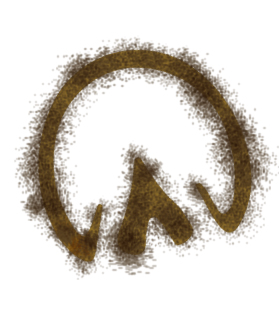Hay Everyone!
With spring grass shooting up all over the place and making the pastures green, I thought it would be interesting to learn more about the nutritional value of those green shoots. I decided to enlist a little help from our very own Dr. Carey Williams and her recent graduate student, Dr. Jennifer Weinert-Nelson. After all, they are the resident experts on horse nutrition and pastures! Dive in with me and see what you can learn about forages for your horse and what role they play in your horse’s diet.
First and foremost, my investigation confirmed that forage is the most important part of a horse’s diet. In fact, some horses can meet their nutrient requirements through forage alone and don’t need to be supplemented with any sort of grain. At a minimum, a horse should consume 1% of its bodyweight in forage each day. This means a 1,000 lb. horse needs to eat at least 10 lbs. of forage a day. Forage can include both fresh forages such as pasture and dried or preserved forages such as hay and haylage. The two most commonly used forages in the United States are pasture and hay.
Part of the process of providing adequate nutrients for your horse is analyzing the nutrients in the feedstuffs you provide for your horse. This is easy with commercial feeds such as pelleted feeds as a guaranteed analysis will be provided in the labelling information. The situation is not quite as straightforward with most forages. I tried checking if my pasture came with a feed tag! Turns out it doesn’t! You can, however, send in samples to a laboratory and they will provide an analysis of the nutrients in the forage. You should go through this process of sampling your pasture and hay to evaluate whether the forage and feed you’re feeding to your horse meets its nutrient requirements. Taking a representative sample of the forage is important, if you want your results to truly be representative of the forage you are sampling. This fact sheet on Analysis of Feeds and Forages has some useful information and tips for getting a representative sample. If you need assistance with the sampling, your local Extension agent should be able to provide help. They may also be able to provide you with the tools you need for sampling hay, so it’s a good idea to check in with them.
After you’ve taken your forage samples and read through the results, you might realize your pasture is providing very little nutrition. If this is the case or if your pasture has lots of bare spots, you may want to do some work to improve the quality and amount of forage available in your pasture. In the long run, this can help save money and will provide forage in a manner that mimics a horse’s natural grazing habits which can contribute to keeping your horse healthy. For tips on rejuvenating your pasture and keeping it producing abundantly, check out the fact sheet on More Productive and Nutrient Dense Horse Pastures.
It is also possible that your pasture is too nutrient dense for your horse. This is usually a concern if your horse has equine metabolic syndrome, insulin resistance, a history of pasture induced laminitis, or is obese. High levels of non-structural carbohydrates (NSCs) are the concerning component of forages for horses in these categories. NSCs are the sugars, starches, and fructans produced by and stored within the plants. There are management strategies you can implement, if you are concerned about the NSC content of the pasture and your horse’s consumption of it. One strategy is to introduce different species of grass into your pasture. For more information on warm-season grasses, their NSC content, and incorporation into horse pastures, check out the fact sheets on Non-Structural Carbohydrates and Equine Warm-Season Grass Pastures and Crabgrass Integration in New Jersey Horse Pastures.
Regardless of the nutrient content of your pastures, remember that changes to your horse’s diet to be made gradually to reduce the possibility of digestive upset. This may include limiting access to spring pastures as the rapidly growing forage may be too much for your horse, especially if it has received little turnout or access to pasture forage over the winter and early spring.
Hopefully, you’ve learned something about the forage your horse consumes daily. I, of course, had fun with this investigation! Anything that involves food is sure to keep my attention. I’m off to take another nibble of that bright green grass springing up in my pasture. I’ve also got to track down someone from the Equine Science Center to take a forage sample and send it off for analysis. The last time I tried to send a package, there was an uproar at the shipping office. I really don’t see what the fuss was all about, but I’m playing it safe this time around.
Until Next Time.
Your Friend,

Lord Nelson
